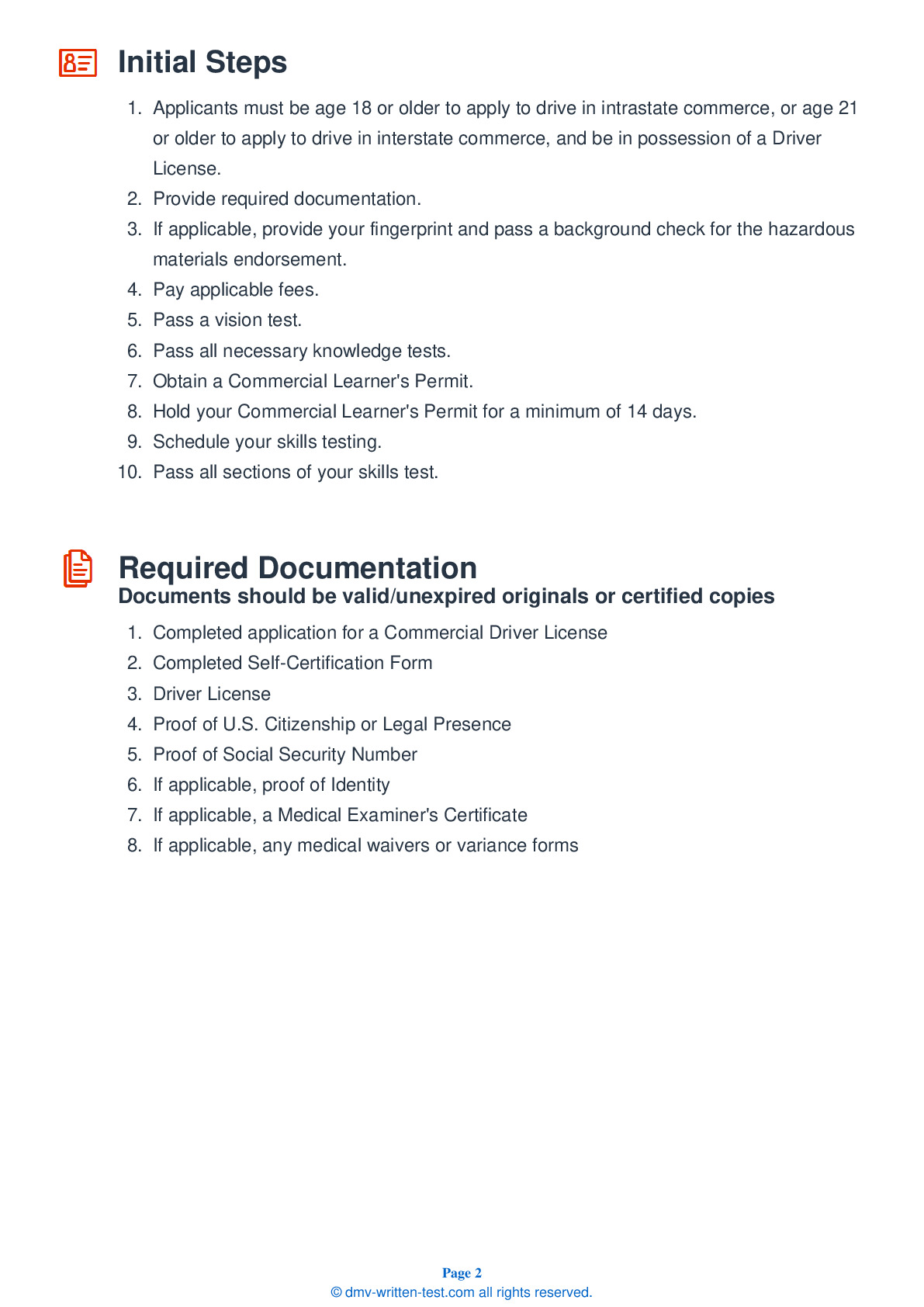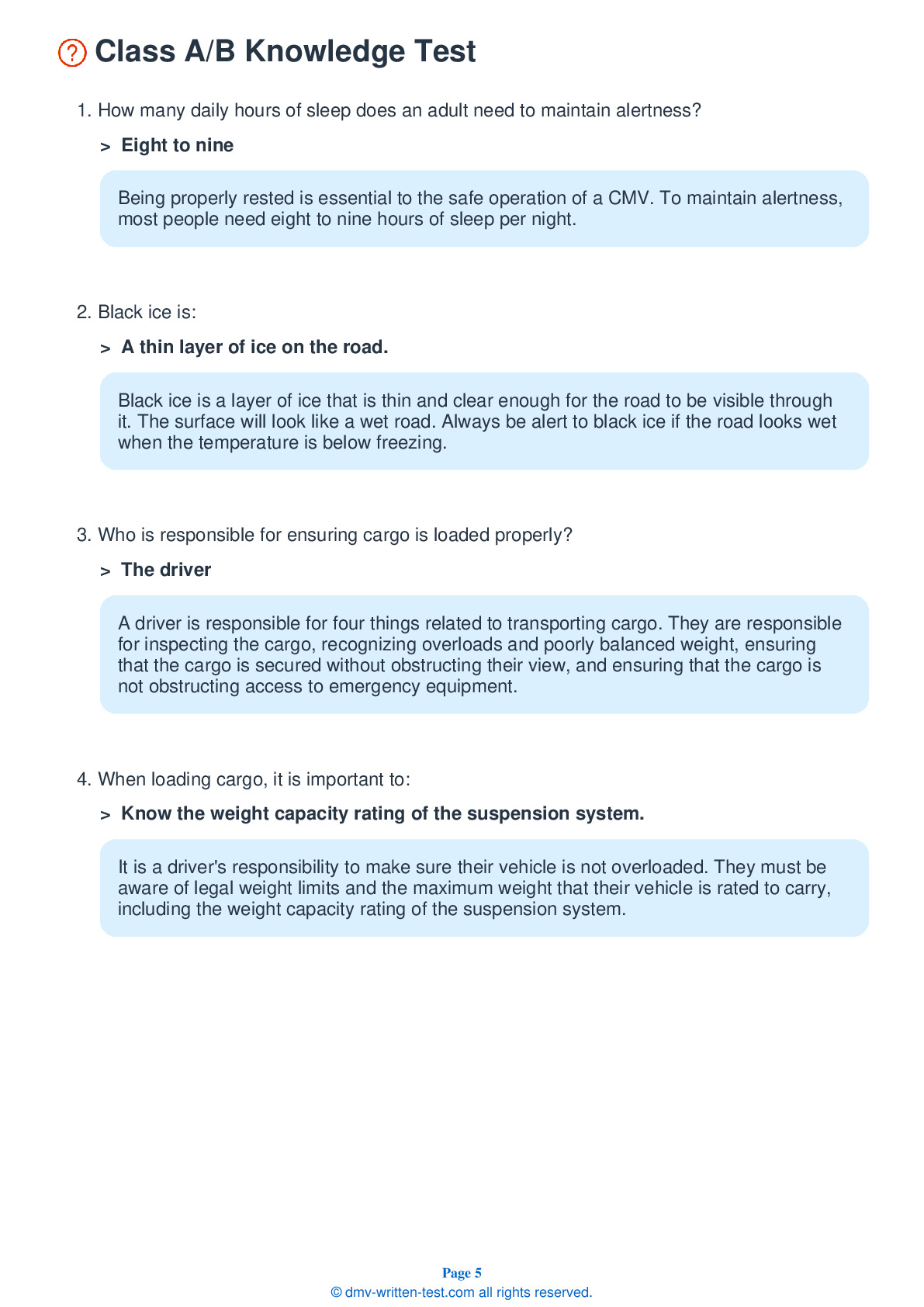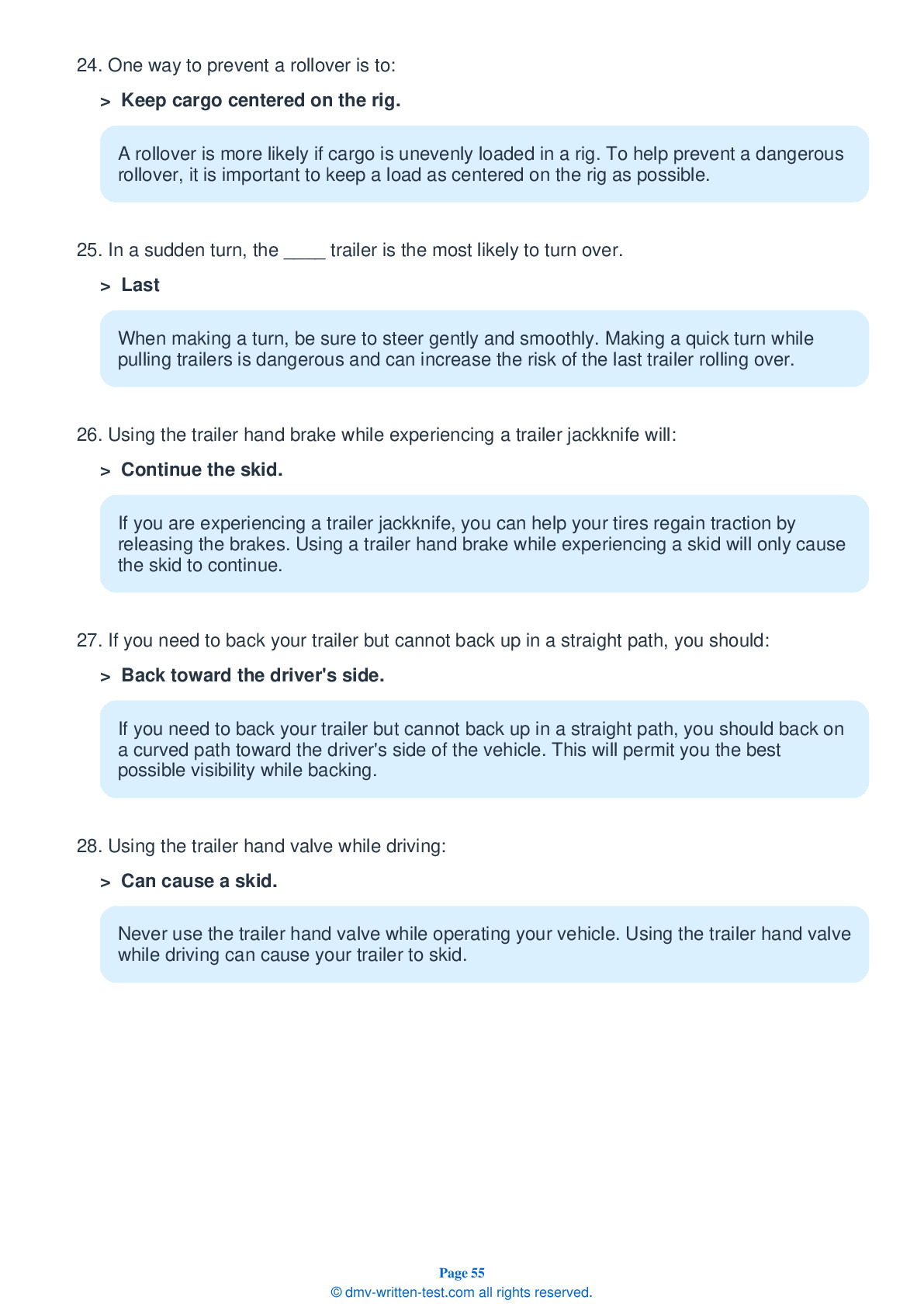Combination
All applicants who are applying for a Class A CDL should be prepared to take the Combination test. This test covers information found in Section 6 of the Alaska Commercial Driver License Manual. Section 6 provides the information needed to safely operate tractor-trailers, doubles, triples, and straight trucks with trailers. The test is made up of 20 multiple-choice questions, and applicants will need to correctly answer a minimum of 16 questions to pass. The Combination test is not a replacement for the Double/Triple endorsement test.
Number of Question
Passing Score
1. Before beginning a trip, you should:
Explanation
Before a trip, you should ensure that air reaches all air brakes on all trailers by opening up the rear emergency line and service line shut-off valves and listening for escaping air. Close both shut-off valves before beginning to drive.
2. A tractor protection valve:
Explanation
A tractor protection valve keeps air in a tractor or truck air brake system should the trailer break away or develop a bad leak. The valve will close automatically if the pressure drops to an unsafe level.
3. Which of the following will not help prevent a rig from rolling over?
Explanation
To help prevent a rig from rolling over, you should keep the weight of the cargo as close to the ground as possible when loading. You should also drive slowly around turns.
4. If the emergency air line loses pressure:
Explanation
The emergency air line controls the emergency brakes on a combination vehicle. A loss of air pressure in the emergency line will cause the emergency trailer brakes to activate.
5. When driving a vehicle equipped with an Anti-Lock Braking System (ABS), brakes should be applied:
Explanation
When driving a vehicle with ABS, you should brake in the same manner as you would in a vehicle without ABS.
6. Maintain a following distance of at least ____ for every 10 feet of your vehicle if you are traveling at a speed under 40 mph.
Explanation
At speeds below 40 mph, you should allow at least one second of following distance for every 10 feet of your vehicle. Follow the same formula when traveling at faster speeds, then add one additional second to your following distance. Remember that larger vehicles require more space to stop than smaller vehicles.
7. The service air line is often controlled by the foot brake and is attached to the ____ valves.
Explanation




